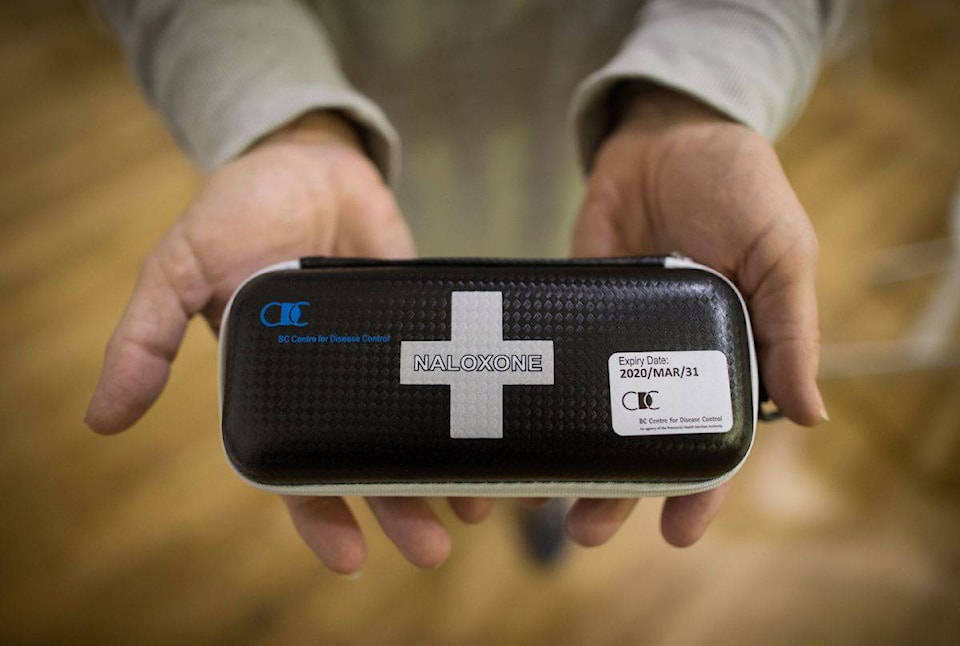Fewer people are dying of suspected illicit drug overdoses in the East Kootenay than anywhere else in the province.
The BC Coroners Service has released data on unintentional illicit drug overdose deaths in British Columbia from January 1 to December 31, 2018.
Across the province, there were 1489 suspected drug overdose deaths last year, two more than in 2017.
This equates to about four deaths per day or more than 4.5 times the number of motor vehicle accident deaths.
Broken down by health services delivery area, the Fraser and Vancouver Coastal Health Authority had the highest number of illicit drug overdose deaths (501 and 434 deaths, respectively) in 2018, making up 63 per cent of deaths during this period.
The East Kootenay, on the other hand, had the lowest number of illicit drug overdose deaths in the province for the second year running.
In 2018, there were nine deaths recorded in the region – two more than 2017 but fewer than the 13 recorded deaths in 2016.
East Kootenay Addiction Services Society Executive Director Dean Nicholson said this could be attributed to the region’s smaller population and growing awareness of services.
“Partly we know that a lot of the deaths are happening in the urban areas, the greater populated areas, so there’s likely going to be a higher concentration of people who are opioid users in certain parts of the province,” he said.
“Because we’re a smaller population and I think the East Kootenay has done really well in terms of our organization, Interior Health and Public Health really working hard to get harm reduction supplies, and harm reduction education out to the communities.
“We’ve been very active with giving out naloxone kits, for example, so it may be that we have more people who are readily able to get the prevention kits and that might be a factor as well.”
A robust opioid replacement program is also helping more users kick the habit.
“We’ve got across the East Kootenay somewhere in the range of 150 people who are regularly receiving either methadone or suboxone to help them not be on opioids,” said Nicholson.
“My guess would be that we probably have a higher percentage of opioid users here that are on that program than there might be in other communities because we have a pretty good system locally of getting people onto that program.”
Fentanyl continues to be the most prevalent substance in illicit drug overdose deaths, detected in 85 per cent of deaths in 2018, up from 82 per cent in 2017.
The drug is a powerful pain medication – up to 100 times stronger than morphine – and even a small amount can cause an overdose, and death.
Overdose deaths where fentanyl has been detected have surged since 2012, while deaths involving other drugs have remained relatively stable, according to the BC Coroners Service.
“The problem with fentanyl now is it’s not being produced pharmaceutically where it’s controlled… because it’s being produced by organized crime, there’s no way of really knowing how much of the drug you’re getting,” said Nicholson.
The Province has vowed to tackle the opioid crisis in the wake of the BC Coroners Service report.
“We are using every possible available tool to save lives, including a first-in-Canada pilot project at the St. Paul’s Hospital emergency department that provides people who have survived an overdose with take-home doses of suboxone and a well-defined treatment plan,” said Minister of Mental Health and Addictions, Judy Darcy, in a release issued February 7.
“This helps to stabilize people with opioid use disorder, ensuring they are connected to a safe alternative to toxic street drugs.”
The Province estimates 4700 deaths have been diverted through its strategies, which include more overdose prevention sites and scaled up distribution of naloxone.
“As we look to the year ahead, we will continue to work closely with our partners to save lives and increase access to mental health, and addictions services and supports,” said Darcy.
Nicholson believes legalization is the key to preventing illicit drug overdose deaths.
“People who are wanting to use opioids or fentanyl are always taking a gamble with whatever they buy. If they’re able to actually have access to pharmaceutically-produced opioids where they could get a regular dose, that would likely reduce the risk of overdosing because there’s not going to be the variability in what they’re buying,” he said.
Nicholson sees a growing trend towards the legalization of drugs generally, especially since the legalization of recreational cannabis in Canada last year.
“We’re seeing other jurisdictions are doing the same and there’s certainly been a call around the world from various nations, and groups to look at decriminalization or legalization of substances generally and shifting the focus away from substance use being a legal/criminal matter to substance use being a public health matter,” he said.
“That would allow us to shift the way we try to intervene.”
